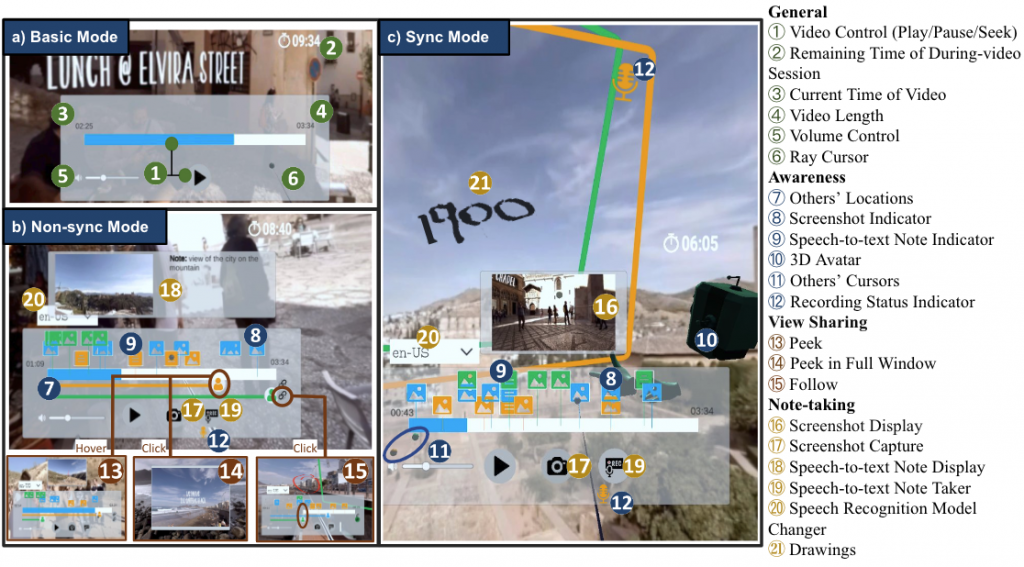Collaborative Online Learning with VR Video: Roles of Collaborative Tools and Shared Video Control

VR has a noteworthy educational potential by providing immersive and collaborative environments. As an alternative but cost-effective way of delivering realistic environments in VR, using 360-degree videos in immersive VR (VR videos) received more attention. Although many studies reported positive learning experiences with VR video, little is known about how collaborative learning performs on VR video viewing systems. In this study, we implemented two collaborative VR video viewing modes based on the way of group video control, synchronized or shared (Sync mode) and non-synchronized or individual video control (Non-sync mode), against with a conventional VR video viewing setting (Basic mode). We conducted a within-subject study (N = 54) in a lab-simulated remote learning environment. Our results show that collaborative VR video modes (Sync and Non-sync mode) improve users’ learning experiences and collaboration quality, especially with shared video control. Our findings provide directions for designing and employing collaborative VR video tools in online learning environments.
Cite this work: Qiao Jin, Yu Liu, Ruixuan Sun, Chen Chen, Puqi Zhou, Bo Han, Feng Qian, Svetlana Yarosh. 2023, Collaborative Online Learning with VR Video: Roles of Collaborative Tools and Shared Video Control. In Proceedings of the 2023 CHI Conference on Human Factors in Computing Systems (CHI ’23). https://doi.org/10.1145/3544548.3581395

